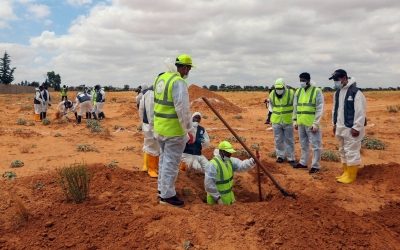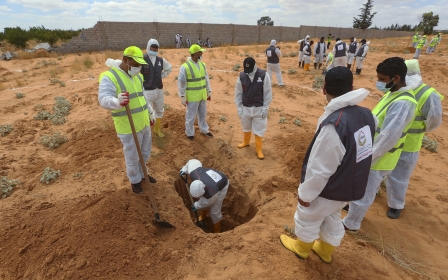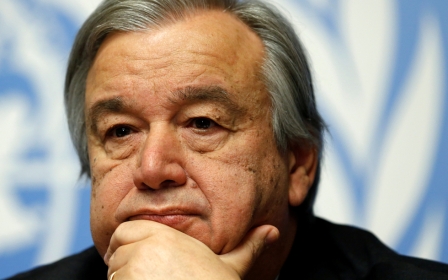Libya urged to investigate fate of hundreds missing in Tarhuna

Human Rights Watch urged Libya's internationally recognised government to investigate the disappearance of hundreds of missing people from the city of Tarhuna, following the discovery of several mass graves there last summer.
The New York-based rights group, in a statement released on Thursday, quoted Libyan officials as saying at least 338 residents were reported missing after forces loyal to eastern commander Khalifa Haftar withdrew from the area in June.
"Families in Tarhuna whose loved ones went missing face a difficult time moving forward with their lives," said Hanan Salah, a senior Libya researcher at HRW.
"Authorities should act on the grim discovery of mass graves by taking proper steps to identify the bodies and bringing those responsible for abuses to justice."
Tarhuna, 60km (37 miles) southeast of Tripoli, was the launchpad for Haftar's failed attempt to take control of the capital.
Residents said that his forces, backed by the Kaniyat militia, "abducted, detained, tortured, killed and often disappeared people who opposed it or were suspected of doing so".
"When they capture and kill someone, they also make sure to kill the rest of [the men in] his family so that they don't retaliate," one resident told HRW. "After they kill people, they seize their money and property."
Kamal al-Siwi, the head of the missing persons authority for the Tripoli-based Government of National Accord (GNA), said most of the missing people disappeared between April 2019 and June 2020 - during the assault on Tripoli.
Some of the bodies were found handcuffed, and most were in an "advanced state of decay", which made it hard for relatives to identify them, he said.
HRW noted that while many of the disappearances occurred while the Kaniyat was aligned with Haftar's forces, they also may have also been carried out when the milita was aligned with the GNA.
'Not fighters'
Family members of the disappeared told HRW their relatives were not fighters but were targeted because they opposed the Kaniyat, or the 2011 uprising that led to the ousting of longtime ruler Muammar Gaddafi, whose rule was supported by the al-Kani family.
In November, the United States issued sanctions on the Kaniyat under the Global Magnitsky Act, which allows the government to sanction foreign officials accused of gross human rights violations.
Sanctions specifically targeted the militia's leader, Mohamed al-Kani, for "torturing and killing civilians during a cruel campaign of oppression in Libya".
"The United States stands with the Libyan people and will use the tools and authorities at its disposal to target human rights abusers in Libya and across the world," US Treasury Secretary Steven Mnuchin said at the time.
Libya has been wracked by violence since 2011, when a Nato-backed uprising overthrew Gaddafi. Since then, multiple foreign powers have become involved in the country.
Since disputed elections in 2014, the country has been divided between competing administrations, with the UN-recognised GNA supported by Turkey, while the UAE and Egypt have backed forces loyal to Haftar.
Middle East Eye delivers independent and unrivalled coverage and analysis of the Middle East, North Africa and beyond. To learn more about republishing this content and the associated fees, please fill out this form. More about MEE can be found here.





